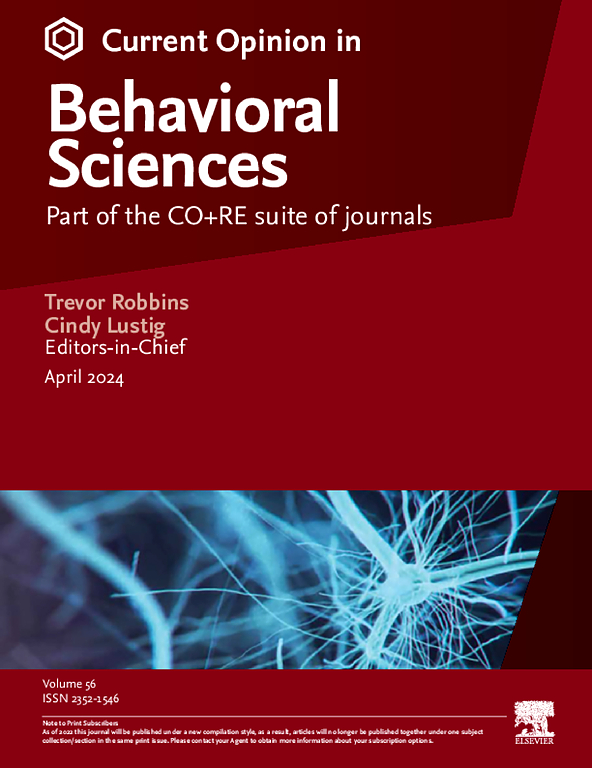行为流中的事件
IF 3.5
2区 心理学
Q1 BEHAVIORAL SCIENCES
引用次数: 0
摘要
人类的大脑在理解过程中构建和更新事件模型。事件模型是多维的、多时间尺度的和结构化的。它们有助于预测,形成记忆,并促进行动控制。事件模型可以通过替换变化的特征信息来增量更新,也可以通过构建一个全新的模型来全局更新;这两种机制都有证据。默认模式网络组件,特别是内侧前额叶皮层,被认为实现关键事件模型功能,利用时间分级结构,其中时间尺度较长的区域执行更多的整合和抽象。事件模型表征的两个特征是事件边界处整体活动的阶段性变化和这些边界处神经模式的变化。当前的理论提出了事件模型更新的多种控制结构,包括监控事件模型驱动预测的质量。在理解过程中,事件模型的更新不仅对即时信息的处理有重要影响,而且对长期记忆的形成也有重要影响。本文章由计算机程序翻译,如有差异,请以英文原文为准。
Events in the stream of behavior
The human mind constructs and updates models of events during comprehension. Event models are multidimensional, multitimescale, and structured. They enable prediction, shape memory formation, and facilitate action control. Event models may be updated incrementally by replacing feature information as it changes or globally by constructing an entirely new model; there is evidence for both mechanisms. Default mode network components, particularly medial prefrontal cortex, are thought to implement key event model functions, utilizing a temporally graded architecture in which regions with longer timescales perform more integration and abstraction. Two signatures of event model representations are phasic changes in overall activity at event boundaries and shifts in neural patterns at those boundaries. Current theories propose multiple control structures for event model updating, including monitoring the quality of event model–driven predictions. Event model updating during comprehension has important consequences not only for processing information in the moment but also for forming long-term memories.
求助全文
通过发布文献求助,成功后即可免费获取论文全文。
去求助
来源期刊

Current Opinion in Behavioral Sciences
Neuroscience-Cognitive Neuroscience
CiteScore
10.90
自引率
2.00%
发文量
135
期刊介绍:
Current Opinion in Behavioral Sciences is a systematic, integrative review journal that provides a unique and educational platform for updates on the expanding volume of information published in the field of behavioral sciences.
 求助内容:
求助内容: 应助结果提醒方式:
应助结果提醒方式:


